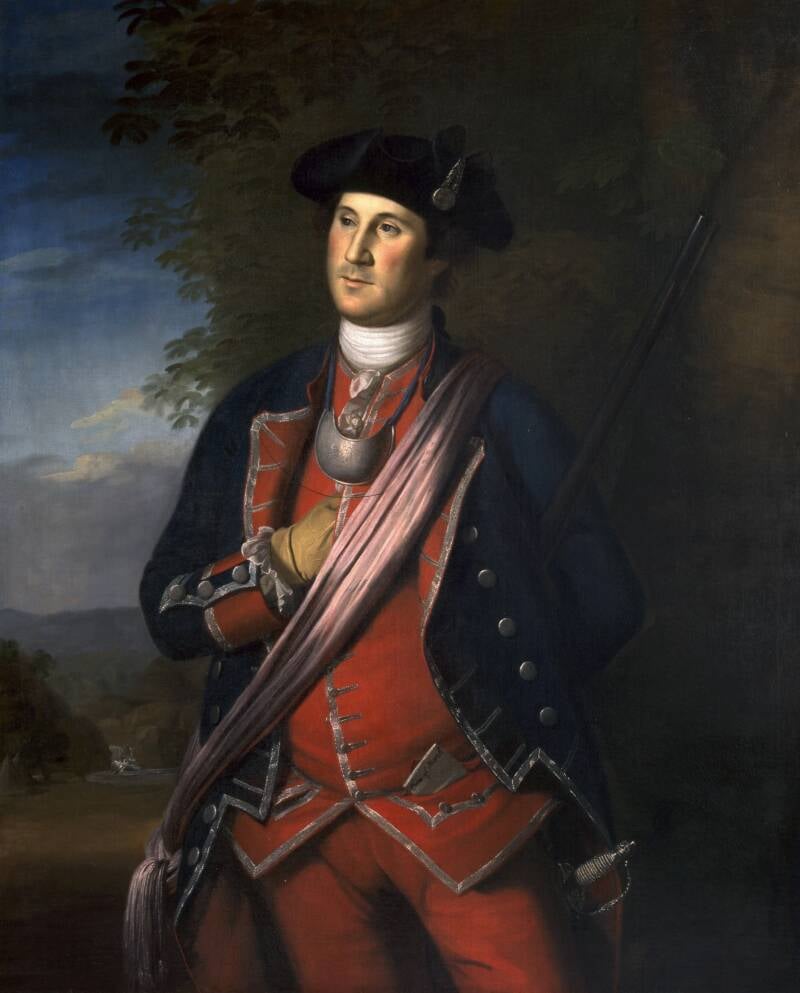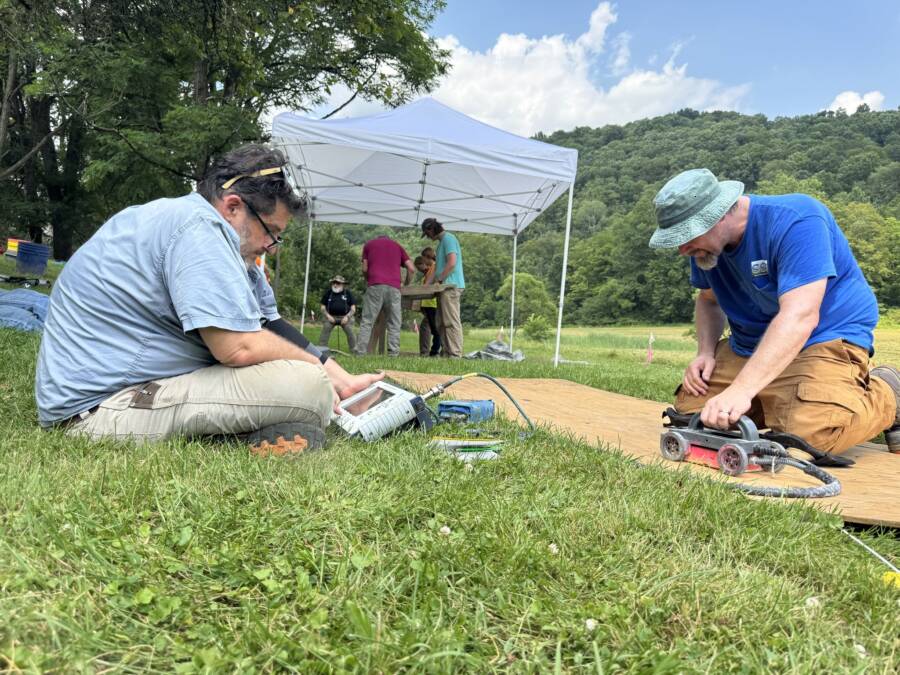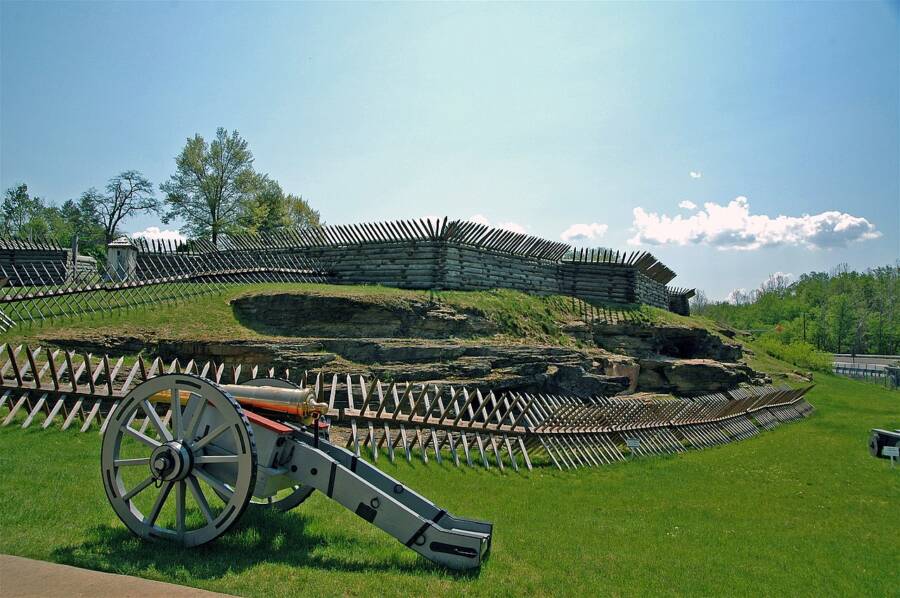During the French and Indian War, George Washington and his men mistook a group of fellow troops as French soldiers and opened fire, resulting in the deaths of more than a dozen people.

Public DomainCharles Willson Peale’s 1772 portrait of George Washington, the earliest known depiction of the future president.
Long before George Washington led American troops in the Revolutionary War, defeated the British, and became the nation’s first president, he was a 26-year-old colonel fighting in the French and Indian War. During that conflict, Washington narrowly survived a friendly fire incident that was later described as the worst “jeopardy” he ever encountered. Now, archaeologists believe they’ve located the site of the battle near a centuries-old fort in Pennsylvania.
After scouring the area near Fort Ligonier, archaeologists found a number of objects that suggest they’ve located the site of the friendly fire, which took place between Washington and another colonel aligned with the British. Though the incident is largely forgotten today, it played a crucial role in both Washington’s life and in the larger conflict.
Discovering The Friendly Fire Site Near Fort Ligonier

Juniata College/FacebookArchaeologists, including volunteers from the Veterans Archaeology Program, excavate the site near Fort Ligonier.
The discovery of the friendly fire site was led by Jonathan Burns, an archaeologist and the director of the Cultural Resource Institute at Juniata College. Over the past four years, Burns and a team of archaeologists, including volunteers, narrowed in on the location of the site, which they believe is roughly two miles west of Fort Ligonier.
“As an archaeologist this is an exciting day for me,” Burns said as he announced the discovery of the site at the Fort Ligonier museum on July 11. “It’s not every day that you get to announce that you discovered a heretofore undiscovered Washington battlefield.”
Using metal detectors and ground-penetrating radar, archaeologists uncovered some 300 18th-century objects, including uniform buttons and buckles, musket balls, nails, and a French watch key.
Archaeologists are convinced that, more than 250 years ago, this was the site where George Washington narrowly survived a friendly fire incident during the French and Indian War.
“I’m here to say that we are pretty confident that we’ve done our due diligence here,” Burns stated. “We’ve covered multiple lines of evidence to present this body of work and make the claim that this has been found.”
Young George Washington’s Friendly Fire Battle

Mind meal/Wikimedia CommonsFort Ligonier today. Archaeologists believe that George Washington’s friendly fire incident took place roughly two miles west of the fort.
The friendly fire incident took place during the French and Indian War (1754 to 1763), which was part of the larger, global conflict known as the Seven Years’ War. Then, Washington was a 26-year-old colonel fighting on behalf of the British against the French. But on Nov. 12, 1758, he stumbled into a friendly fire incident that almost cost him his life.
Washington had been ordered to lead a regiment of about 500 Virginians to help a fellow colonel, George Mercer, defend Fort Ligonier against French and Native American troops. But on that night, as Washington and his men walked through a thick fog at dusk, his and Mercer’s troops mistook each other for enemies.
“It being near dusk and the intelligence not having been fully dissiminated among Colo. Mercers Corps, and they taking us, for the enemy who had retreated approaching in another direction commenced a heavy fire upon the releiving party which drew fire in return in spite of all the exertions of the Officers one of whom & several privates were killed and many wounded before a stop could be put to it,” George Washington wrote to his friend, Colonel David Humphreys, for a biography of Washington that Humphreys was writing around 1786.
To stop the men from firing, Washington put his own life in great danger by riding between the two lines of troops and attempting to knock away the muskets with his sword. It was, wrote Humphreys, the most “imminent danger” of Washington’s life, and he had never been in so much “jeopardy… before or since.”
Around 13 men were killed, and dozens more were wounded, but the friendly fire incident was swiftly forgotten. It was, however, historically significant. It led to the capture of several French troops, who in turn revealed the weakness of nearby Fort Duquesne, allowing the British to overtake it. Washington also resigned shortly thereafter. He would not take up arms again until he fought against the British in the American Revolution.
As such, the friendly fire site near Fort Ligonier is a small but significant piece in the larger history of George Washington, the Revolutionary War, and the United States. Had Washington ridden his horse slightly differently on that night, he may have lost his own life to friendly fire — and never gone on to lead the young United States to military victory.
After reading about the discovery of the site of a friendly fire incident from early in George Washington’s military career, go inside the disturbing history behind Washington’s teeth. Or, see why George Washington’s death still mystifies historians to this day.





